Late Night in the Reagan Era: Swimming Upstream on A Personal Horror Journey (PART 4)

*Editor’s Note: B Harrison Smith is well known to horror fans as the writer/director of The Fields, Death House, and Camp Dread. He also directed The Special, released in 2020.
Related Article: Swimming Upstream: Filmmaker Harrison’s Smith Horror Journey (PART 1)
Related Article: Kid’s Horror Pushes Upstream: How ABBOTT AND COSTELLO & MAD MONSTER PARTY Made An Impact (PART 2)
Related Article: Horror’s Summer of ‘79; “Swimming Upstream: A Personal Horror Journey” (PART 3)
There was a time when you had three networks and several pay-cable channels. It was late-night HBO where I got my fix of blood, boobs, babes and horror.

Summer late nights, Christmas breaks from school—all allowed you to watch after hours. The parents went to bed and you got to tune into the movies you missed in theaters, due to the “R” rating, limited release or maybe you just didn’t have the guts to watch on the big screen.
The Dark, Wolfen, Halloween, Halloween II, Friday the 13th, Friday the 13th II, The Evictors, Homebodies, The Fog, Humanoids From the Deep, Dead and Buried, When a Stranger Calls, The Changeling, The Sentinel, Dressed To Kill, Dead Of Night, Mausoleum, The Burning, The Boogeyman, Motel Hell, Phantasm, The Howling, Up From the Depths, Piranha…the list can go on and on.

A quiet house, dark living room and a 25-inch color TV and you were set. No VCR–not yet.
I would go to Hess’s, a local department store, and find my way to the TVs and electronics to fantasize about owning one of the expensive suitcase-sized Beta machines lined up on shelves. The price tags would make my mother scoff out loud when I asked if she could at the least THINK about us getting one.
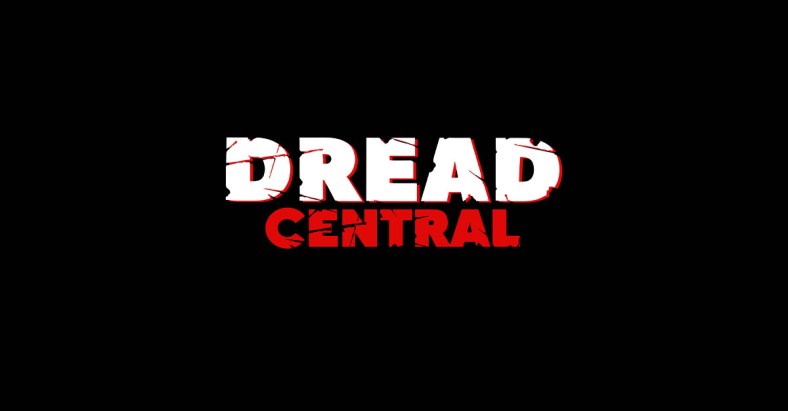
April, 1981…our middle school had its Spring dance and I was dating this tall, Farrah Fawcett-haired blonde and the only thing I could do was slow dance to the Moody Blues Nights In White Satin or Boz Scaggs Look What You’ve Done To Me. “Dancing” was defined as slow swaying, hands around the waists, mine eventually dropping to Farrah’s ass, then back up before a teacher caught me. Made out and swayed, played grab ass–that was 80s dancing for me.

I got a white rotary phone that Christmas, 1980 and spent hours on it with this girl. I was in love but…that night of the dance, John Carpenter’s The Fog was debuting on HBO and I was missing the debut. It would re-air at midnight (The Witching Hour as Stevie Wayne would say). My younger brother was home watching the first showing. I was making out with the cute blonde in the middle school gym.

This was a time when I collected HBO Guides, those little 6-7 page booklets that came a few weeks ahead of a new month to tell you what was coming to you on cable. The Fog was in April, 1981’s guide but didn’t even make the cover. I didn’t see it the year before in theaters so HBO was my second chance and I couldn’t wait. I remember waiting for my mom to pick me up, attention now focused on getting home to hear my brother’s review of The Fog while my girlfriend knew something else was on my mind. She thought it was another girl, but in fact it was John Carpenter. I still did not see Halloween but I HEARD all about it.
The air was warm, it had rained. Spring smells were in the air. I was high on teen hormones and when I got home my brother said, “Just wait until you see it.” We called a friend from down the road, he came up and we stayed up to catch the next showing and it was everything we had hoped. The Fog was GOOD horror, but there was a lot of shit and cheese to sift through on late-night cable.

It’s here where I devoured Doug McClure films, especially Humanoids From The Deep with a score from the yet-to-blow-up James Horner. I continued discovering the wonders of Roger Corman with Up From The Depths, Terror In Paradise and Galaxy of Terror. The worm-rape scene still bothers me to this day and I often just zip past on DVD viewings. Little did I know then that one day I would work with Sid Haig and have a drink with Robert Englund, discussing his coming aboard my movie Death House.

It was late night HBO where I discovered Homebodies— a really dark, nasty little horror film with senior citizens as the killers. Think Harold and Maude or Cocoon as a slasher. A city senior apartment complex is threatened with eviction and the old folks decide to defend their homes with deadly force. The humor was dark, but there was this scene where a female social worker came to meet with the kindly old folks, only to be impaled with a Banzai sword and her death was so traumatic it is burned into my brain to this day. Fuck, the way she screamed and walked about with that sword through her torso, agonizing as she dropped to the floor while the senior citizens stand around just waiting for her to expire…it’s on YouTube and I watched it once again and I am good for another 30 years.

HBO gave me The Changeling, the George C. Scott haunted house horror flick and scared the shit out of me so much I went to bed with the lights on. That wouldn’t happen again until 2010 after I watched Lake Mungo. We heckled The Dark, that mess of a film that somehow was turned from a crime thriller into some alien, sci-fi horror film. It featured a headless walking body, somehow able to moan even without its head and Cathy Lee Crosby of TV’s That’s Incredible!
Network TV attempted something new. Before 1979, networks tried their hand at horror, but the Prime Time censors were the moral gatekeepers and often original network TV fare was tepid at best. I saw Ssssss! the Dr. Moreau-type turning people into reptiles movie with The Walton’s Grandpa, Will Geer as the bad guy. You had the offbeat Burnt Offerings with the stunt casting of Bette Davis, still in the creepy old lady casting left over from Whatever Happened To Baby Jane? That might come as close to high concept as it got for network TV and like a film I am about to list, starred Karen Black.

There were films like the Carrie rip-off The Initiation of Sarah on ABC with Shelley Winters, various werewolf movies and even Rankin/Bass got into it with their weird giant sea turtle horror, The Bermuda Depths. Devil Dog tried to meet The Omen with a future Cujo but instead invoked the Drake’s cake.
You had some good stuff like the Kim Darby Don’t Be Afraid Of The Dark ( I still see Kim Darby screaming at the end of that film which got a big budget remake with Katie Holmes but for me, didn’t deliver like the original TV movie) or the now classic Karen Black Trilogy of Terror which was famous for the Zuni doll installment (I have a Zuni doll in my office today), and if you want to argue Spielberg’s Duel was horror, then that would be at the top of the list.
Otherwise, horror movie pickings were slim on network TV.
The Bernie Casey-led Gargoyles was a made for TV favorite, often hitting Channel 5 out of New York on Saturday afternoons. The opening scene in the barn scared the hell out of me. Once the gargoyles were revealed, it got way less scary as it was clear they were in bad, zipper-up-the-back costumes. It was still a good time for a kid, though.

Like shitty candy, I ate it up. Most of these films were like that hard Brach’s candy your grandmother had in a dish in her living room. It sat there for God knows how long, but she had nothing else sweet in the house, so after staring at it…deliberating …you put your hand in that dish and took a few pieces. You took whatever you could get. Bad horror was better than none and this new TV stuff was better than watching the same old stuff over and over again.

CBS rolled the dice and turned the red-hot horror author, Stephen King’s vampire novel, Salem’s Lot into an unprecedented horror mini-series. For me, it was kind of like Superman The Movie. Hollywood was taking the genre seriously like they did with Superman. Superman The Movie legitimized big studio super hero movies and paved the way for Batman, DC and the Marvel universes.
I will offer here that Salem’s Lot paved the way for the likes of American Horror Story, Bates Motel and The Walking Dead by showing serious horror could be played on network TV. Stephen King’s work would get treated to a number of TV adaptations over the next two decades.
I was now a full year into reading King’s work. I will go into greater depth on the written influence from Stephen King later, but when this miniseries was announced, I got my hands on a Salem’s Lot paperback and read it in three days.
The series also introduced me to Tobe Hooper. I know, how can I call myself a horror fan when at the age of 12, I still had not seen The Texas Chainsaw Massacre? TCM was taboo even by the 1980s. It was considered even more horrific than The Exorcist (which I had not yet seen by 1979). Both of these films were like Britain’s “Video Nasties” and not readily available. Home video had not yet become widespread and content was almost zero.

Knowing Hooper did TCM made me want to watch Salem’s Lot all the more. It would be horrifying, gory and gross and scary as fuck. I just watched the original Psycho in sixth grade and the shower scene scared the piss out of me. TCM and The Exorcist still eluded me and I don’t remember them hitting HBO during this time. If so, I would have watched.
Something was happening…the dots that Fangoria helped me to connect with horror faces, filmmakers and the industry were beginning to form a neural network. I was putting things together and despite being a kid and terrified of seeing TCM I searched it out and looked up to the best of my ability, information on Hooper’s previous work.
Salem’s Lot was THE talked about television event in 1979. Kids in my middle school buzzed about it, some too afraid to watch, others their parents forbade it, making sure the TV was on lockdown. In our house, there was no issue and my mom, who had read the book, did something she rarely did…she watched TV with my brother and me.
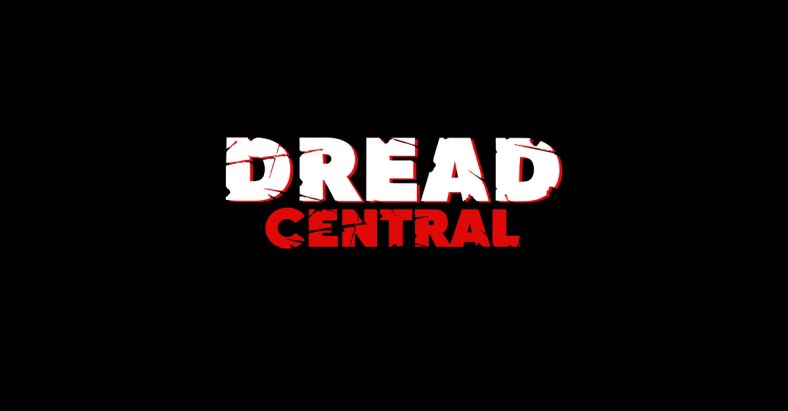
Having not read the book when the series aired, it was all fresh to me. My mom commented, cigarette in hand, how this was different, they changed that and she was disappointed with Barlow, the head vampire played by Reggie Nalder. I still say Barlow’s staking at the end of the film by David Soul’s Ben Mears is one of the best vampire killings put to film. Hooper went with a minimalistic Barlow, opposite of the loquacious vampire of King’s novel.
It worked for me. The miniseries scared the shit out of me, and gave us several iconic takeaway images…especially the Glick boy hovering at his brother’s window and floating hauntingly into his bedroom to feast. The vampires are scary and when the action comes, it comes in Hooper fashion—quick bursts of terror.
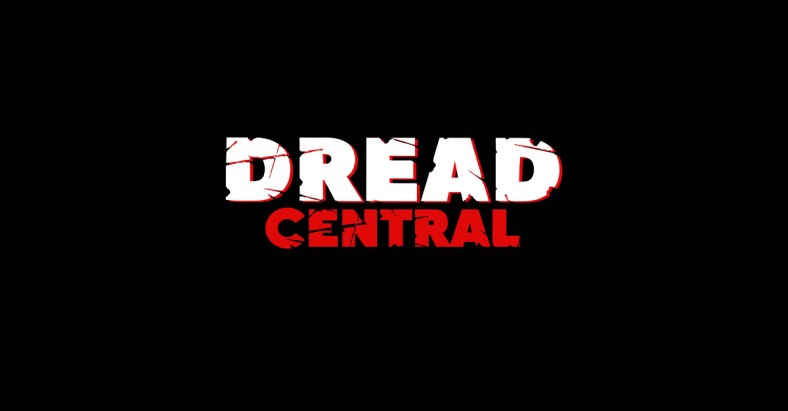
Paul Monash’s script deftly handled a lot of characters and after reading the book I respected the script even more. Monash combined some characters, eliminated others and was able to keep the building foreboding high while avoiding the deep-rooted sexual implications of the novel. The Nosferatu look works, and while Barlow is stripped of the chess-playing strategist of King’s book, the visceral impact that Nalder’s Barlow elicits makes it all worthwhile.
Salem’s Lot the miniseries confirmed my fandom for Stephen King. My friend got me Salem’s Lot in paperback that Christmas and I still have it, all worn and beaten with its “eight terrifying pages” of photos from the miniseries in the middle. I used my allowances and birthday money to get every book he wrote to that point. Fangoria started mentioning his name more and more as King became a steadily growing influence on the horror movie industry.
So it worked…don’t ask me how, but CBS pulled off a hat trick in prime time horror. The high ratings sent a message back to Hollywood…stop treating horror like the family’s crazy uncle. The genre had a place at the “good folks” table.
Something else was happening.
I carried a Stephen King book with me everywhere in school. The covers caught other kids’ attention and then after Salem’s Lot, King’s name was far more recognizable. He was becoming a household name like another Steven (Spielberg) was about to become.

I was becoming “The Horror Kid.” Not so sure that was a great thing, but it was better than “faggot.” The mainstream kids–the more athletic ones, used that word as an all-inclusive carpet bombing term. While in their heads they THOUGHT they knew what it meant, instead they just knew it was good to hurt kids they saw as different in any way. I don’t excuse the use of the word, but in hindsight, it was a stupid kid word to attack what they didn’t understand.
Maybe I’m just rationalizing. The word hurt, no matter what spin I want to put on it now. It was a word of rejection, not fitting in and just downright nastiness and I didn’t know what I did to deserve it except love movies and talk about them a lot.

In my previous school, in fourth grade–my copy of Dick Smith’s DIY makeup effects book got “faggot” lobbed at me quite a bit. Classes always had a number of “those kids—the dirty kid, the fat kid” or you had the “Horse Girl.” Horse Girl was the quiet girl, often withdrawn who worshipped horses—they were on her notebook, on her T-shirts, necklaces, charms, barrettes….books on horses usually made up of by the James Herriot “All Creatures Great and Small” series. She almost always owned a horse. She liked horses better than people, and now as an adult, I can say—Horse Girl had it right.
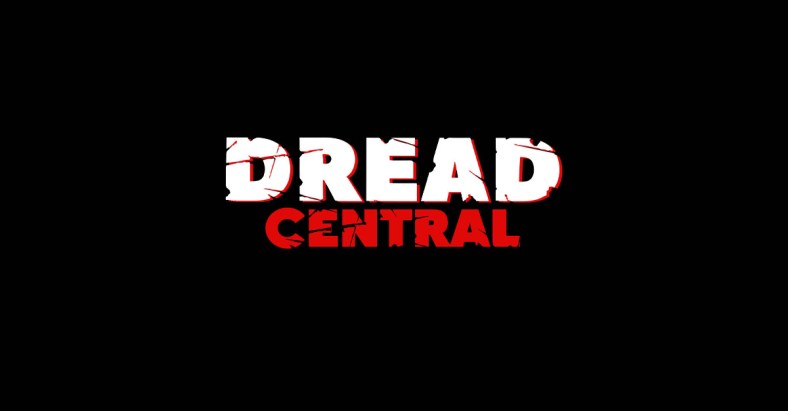
I was “The Weird Kid” who, by seventh grade, morphed into “The Movie Kid” with a concentration in horror so heading toward “The Horror Kid.” Remember, I wrote Jaws 3 in sixth grade and dropped Class Babe Toni into it as a character. I carried around copies of paperback Jaws and Jaws 2 (which I bought from the Scholastic Book Club that year. I bet they don’t offer those kinds of books to middle schoolers anymore).
Before these specific labels most of the guys just called me “faggot.” That’s why my blonde, Farrah-haired girlfriend would say in eighth grade, “You’re on the verge of popularity,” asking why I had to walk through the hall in my white Dr. Frankenstein wig, spectacles and lab coat on my way to the school’s basement TV studio to make Mad Monster Party.


ABC had nothing original to respond to Salem’s Lot or even NBC’s Burnt Offerings.
But they did have Jaws and in seventh grade they debuted the blockbuster in glorious “edited for television” color and the following year they dropped Jaws 2.
“The Movie Kid” now turning into “The Horror Kid” discovered that free access to big horror films was a mixed bag. Not only were they interrupted by commercials, the networks could do something else besides “editing for television.” They could ADD scenes. The deleted scenes the director felt should not make the theatrical cut were not put back into the film to make up for lost time due to commercials. Often the scenes took you out of the moment, perhaps laying the foundation for the eventual Internet Bullshit of “The Mandela Effect.”
The film was not what I remembered and “deleted scenes” were new at the time. There was no “special version” or “behind the scenes” footage available like today. So many were unaware that deleted footage even existed. ABC gave us Quint tormenting a clarinet-playing kid and other small bits while Jaws 2 gave us Brody giving parking tickets and an extended attack on the helicopter that showed how limited the mechanical shark was, and rightly excised from the theatrical print.
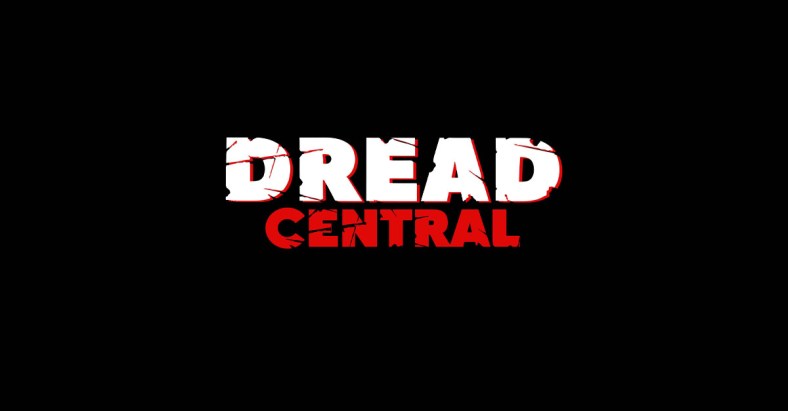
We also got vocal dubbing to change lines like “She’s got tits like a sparrow,” to “She’s got a BODY like a sparrow.” It was an eye-opener on how films were released and the fine line between “edited for TV” and censorship.
I made it clear to my blonde Farrah-hair girlfriend that I would take no calls during Jaws 2. Usually we spent our evenings tying up the house phone lines until either of our parents hopped on an extension and barked “I need the phone,” which meant “Get the fuck off.” I remember her saying, “You love horror movies and that stupid shark more than you do me!” She was probably right.
I remember flipping out in summer 1980 when Jaws 2 came to HBO. It was on the cover of the guide and I kept it to this day in a scrapbook. I also tape-recorded Jaws 2 and by tenth grade would draw the whole thing out, making it my second quasi-storyboard.
CBS pulled the biggest broadcast boner and a shining example of “Just because you can, doesn’t mean you should,” with its 1980 network airing of 1973’s The Exorcist. You can just hear the suits around the network table, “Take that, ABC!” We will see your Jaws and Jaws 2 and raise you The Exorcist.
Take a film that skirted an “X” rating with its signatures being the foul language, sexual and religious perversion that caused some to faint in theaters and put it on a general audience platform for the whole family. Gut it of all its horror subtext and religious meaning and somehow that translated as a good idea to the powers that be at CBS.
“You mother sews socks that smell, Karras!” While not the line they dubbed (they just cut it) they might as well had done something similar. The whole thing was a dumpster fire and a terrible programming idea. The cynical attempt to cash in on ratings over art was so apparent no one seemed to try hiding it. The film was gutted of everything it was famous for and its powerful message of good versus evil.

A friend had a Betmax and one of the first films they purchased on tape was The Exorcist and I got to see it, uncut, in its theatrical version, before seeing the CBS abortion. At age 13 I knew a screwing when I got one, and the network premiere of this film was it. This opened my eyes further to the cynical machine behind the “movie magic.”
Cable and network TV helped to widen the horror network. Cable allowed me to find new films, some that would have been overlooked, denied theatrical screenings or never saw the light of day on free TV. The home video revolution would expand the menu, but combined with Fangoria and a widening resource of books to buy, my understanding of the industry was growing fast.
It’s one thing to love film. It’s another to KNOW it and understand it. Unfortunately today’s film criteria have lowered to being a “fan” or an ultra-fan. There are plenty who attend horror conventions dressed as characters from horror films who never saw the actual film, or couldn’t tell you anything about the making of their object of hero worship or the long, rich history of the genre.
Love Freddy, Jason, Pinhead, Candyman and Michael all you want, but there is a long history before the Holy Pentagram of fan favorites. Often I have stumped horror fans with simple horror questions, with one who could tell you everything about the Halloween films and never heard of Dr. Phibes or Vincent Price.
I started with the original stuff, before a Michael or Freddy. I searched it out and then found everything I could on how it was made. One of my prized books in elementary school (aside from Dick Smith’s makeup book) was this small paperback from the school book club on classic movie monsters and it was this one shown below:

By eighth grade I could talk about horror, its history and formulate informed opinions on the stuff we were watching. Things were changing…a small independent slasher, Halloween had dropped and became the talk of everything. I remember family friends, adults, talking about how terrifying, violent and bloody Halloween was. I heard the same for Texas Chainsaw.
I wouldn’t see the original Halloween like Texas Chainsaw in the theaters. I would catch them eventually on late night HBO and home video. What surprised me was the hype behind them. After watching Halloween and then not much later the taboo TCM, I found them to be scary enough. Well made. But terrifying? Bloody? Disgusting? Faint-inducing?
No.
I was learning about a whole new world: the world of hype.
And…I was about to get my first film camera and it would soon be time to put up or shut up.
Categorized:Editorials News













